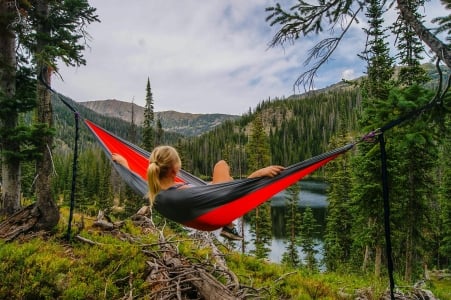Booknordics' Introduction to the Northern Lights
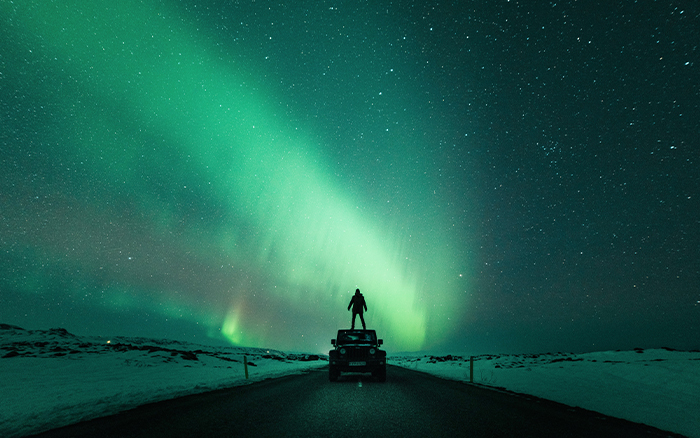
We are right now experiencing the strongest Northern Lights for decades. While the auroras will always be present, 2024 and 2025 are peak years due to unusually high solar activity. So right now, your chance of seeing the Northern Lights is higher than before, but will remain that way only for some time.
This blog aims to furnish you with facts and stories about the Northern Lights. We also address some of the myths and beliefs out there. Enjoy the read and don't hesitate to contact us if we can help in any way.
This electrifying auroral display is extraordinary, leaving a trail of colourful wanderlust following anyone who witnesses. Here at Booknordics.com, we would like to share with you the famous myths and legends surrounding the magical lights, the interesting science behind them, and why the Northern Lights hold a special place in our company's heart.
Booknordics.com Welcomes You to the Northern Skies
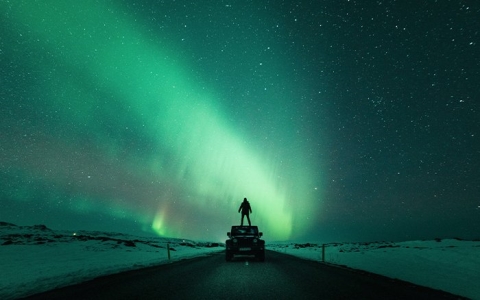
Which destination will be on your bucket list?
Our goal is to welcome you to the incredible north where otherworldly opportunities are limitless, an overwhelming sense of inspiring awe is guaranteed, and witnessing ultimate phenomena in all directions is possible.
The Northern Lights not only cast a protective sheet over our dominantly spectacular lands but also over us.
In the Nordics, you will be inspired by the folklore, myths, mysteries, and celebrations of the ancient past that shape our heritage and culture. You will learn from the science that creates what seems impossible and unreachable dance above our heads.
We wish to share all of this with you and the Northern Lights make that possible.
The Science Behind the Geomagnetic North Pole
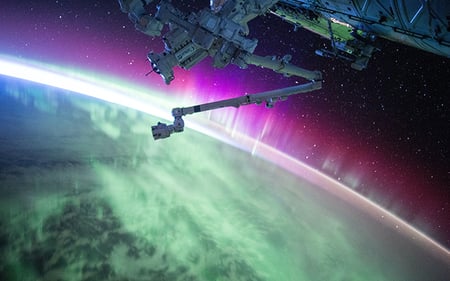
Northern Lights are visible from space
Present science will tell you that the Aurora Borealis is a rich, authentic demonstration of the Earth's magnetic field interacting with charged particles from the sun.
Let’s get a little more technical shall we?
Due to the sun rotating on its axis, its magnetic field is consistently twisting. When there is a disturbance in the sun's magnetic field, it bursts through the surface of the sun and creates temporary patches called sunspots, otherwise known as ‘active regions’.
All this and the rise and fall of its extreme temperature causes those sunspots to erupt into electric ‘solar winds’ that direct charged particles into space. The Earth’s magnetic field resists around 98% of these particles, meanwhile the remaining flow through and travel towards our north and south poles.
These particles pass through the different atmosphere levels surrounding the Earth's orbit and interact with the gases circling inside, finally appearing as a sequence of multi-coloured lights. As a result, two glorious glowing rings of auroral emissions are created directly around our north and south pole, identified as the auroral oval.
What can be seen from Earth is a masterpiece of colour changes. A vivid green, pink, white or even blue parade presents itself before your eyes. You may even see them take the form of archways, leading the way out of the Earth's atmosphere.
Booknordics.com, as locals ourselves, invite you to befriend an open lit campfire in the wilderness and indulge in deliciously roasted hotdogs and tasty warm blueberry tea. On your Northern Lights adventure, the Nordic locals will be thrilled to inform you of the legendary fantasy stories surrounding the dazzling auroral light - making you an expert in seconds.
Aurora Zone for you to Enjoy
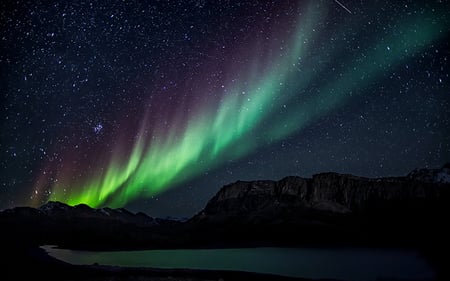
Strong colours light up the Nordic skies from time to time
For centuries the Northern Lights have been the birth and foundation of mythical stories, folklore, local legends, and the topic of research. As the closest revelation to space phenomena, they have been an influence on worldwide conversation, history, culture, art, and religion.
Featured a great deal in fairy tales and Norse mythology, the Northern Lights reflect many different beliefs. Some said they were armour used during the great wars, a form of wildlife encounters, or the meaning of having supernatural powers.
For us, it shows that the Nordics is a phenomenal place where magic can happen. Inspiration not only surrounds us within our direct settings but in those that we cannot physically reach. For us - it’s what makes the Nordics different, and it's good to be different.
So, what is the story today?
The Story of the Northern Lights
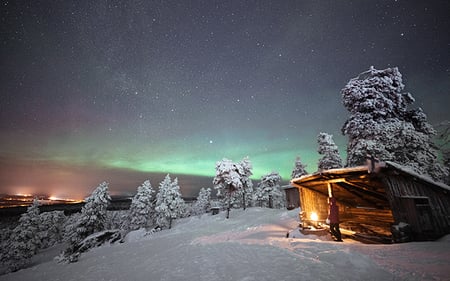
Do you know the scientific name of Aurora Borealis?
Did you know that uncertain indication of the Northern Lights existence date back as early as 2000BC?
It wasn’t until 1619, that Galileo, using both Latin and Greek terminology, gave the magnificent swirls of colour their scientific name, ‘Aurora Borealis’ - meaning - ‘Dawn of the North’.
Let us appreciate what our ancient ancestors believed as they witnessed the skies ablaze with light:
- In Denmark, it was believed the lights were caused by swans who had flown further north and trapped themselves in the ice. When the swans managed to break free, they whipped shards of ice up into the sky, creating auroral storms.
- In Greenland, the lights were believed to be the souls of stillborn babies or babies that had been killed at birth.
- The Icelandic locals believed the lights were also associated with childbirth. Expectant mothers were advised not to look at the Northern Lights whilst giving birth as their unborn baby would be born cross-eyed.
- The Finnish word for the Northern Lights is 'Revontulet' and translated means - 'Fire Fox'. In Finland, the lights were imagined to be caused by the fire fox running across the landscapes and sending up the snow with its tail.
- In Sweden, it was suspected that the lights brought good luck to the local farmers and fishermen. Before heading out onto the ocean, the fishermen would wait patiently for Aurora Borealis, believing the lights represented the reflections of enormous shoals of fish swimming nearby. The Swedish farming community also trusted the lights as a promise of a great harvest in the forthcoming year.
The Norse Mythology
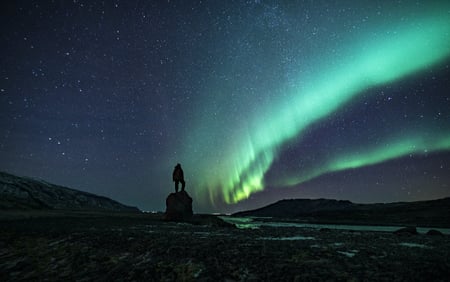
Be part of the mystical Norse legends
Before science explained how Lady Aurora ruled the sky, the Northern Lights were assigned great mystical power and significance across the Nordic regions. Worship, ancient beliefs, and rituals were formed, known to us today as Norse Mythology.
Did you know that ‘Aurora’ is derived from the name of the Roman goddess of the dawn, who travelled from east to west announcing the arrival of the sun on her rainbow-coloured chariot?
As Norse legend suggests, The Vikings believed the lights represented reflections from the shields and armour of the Valkyrie - the choosers of the fallen during the war. The Aurora was also believed to be ‘Bifrost Bridge’ - a glowing arch that led those fallen in battle to the warriors final resting place at Valhalla.
It was a tremendous honour to be chosen by the sacred Valkyries to become warriors in Odin's personal army. The presence of the Northern Lights, entwined with this belief, was a cause for celebration.
The Sami, Norway's indigenous people, were not so overjoyed to witness the arrival of the auroral storms. They believed the lights obtained representations of the dead and the souls of the dead were not to be disturbed.
The Sami people avoided looking, talking, waving, whistling or singing under the Northern Lights. They believed if the lights were to suspect your presence, you would be snatched away into the night.
What do you believe?
The Colours of Lady Aurora

Vivid and rare colours transparent for the human eye
The vivid auroral displays have stunned humanity for years. Their existence presented in a celestial veil of changing colours, entwining with the stars to waltz across the sky.
The Earth’s atmosphere is devised from different atoms, at different altitudes, and with different concentration levels. When the charged particles from the sun collide with these atoms, it ‘excites’ them, producing a variety of colours that Galileo named the Northern Lights.
The colours associated with Aurora Borealis are pink, red, green, yellow, blue, violet, and white. However, the human eye detects the colour green more than any other colour - hence why we see more green light during the celestial display. Remember, this doesn't mean that others were not present during an Auroral storm.
Let us help you take a deeper look into the colours of the Northern Lights:
- Green – solar winds collide with oxygen atoms resting in our Earth’s atmosphere between 60 to 150 miles above the surface. When the oxygen atoms decay back to their initial state, they portray varied shades of green.
- Red - is rarely seen and is also caused by oxygen atoms. These particles are higher up in the atmosphere, above 150 miles, and are subject to a lower energy red light emission.
- Purple and blue – a substantial part of the Earth’s atmosphere is made up of nitrogen. To ignite nitrogen at an altitude of 60 miles above Earth's surface or less, the solar activity and collisions must be exceptionally strong.
- Yellow and Pink – rarely, these colours can be reflected through collisions high up in the Earth’s atmosphere and are simply a mixture of the colour red with green or blue.
We recommend you have the correct camera settings and adjust accordingly when photographing the Northern Lights. Read our Northern Lights Photography Guide for more details.
Places to See Aurora Borealis

Northern Lights dominates the sky in -
Finland, Sweden, Norway, Iceland, the Faroe Islands and Greenland
Aurora Borealis significantly dominates the sky in the polar regions known as the Auroral Zone or the Auroral Oval. Experience shows that she most frequently appears between 17:00 PM and 02:00 AM during the winter months of September through April.
We advise you to travel as north as possible, here you will find yourself amongst some of the most magnificent places to go aurora hunting. Adventurers from far and wide gather in the Nordic regions to experience the once-in-a-lifetime feeling of beholding the natural wonder in action.
So, Where are the Northern Lights? The Nordics - Norway, Sweden, Finland, Iceland, the Faroe Islands, and Greenland have some of the most magnificent locations to see the Northern Lights and we have the best adventures and tour operators to take you there.
When are the Auroras Most Active?
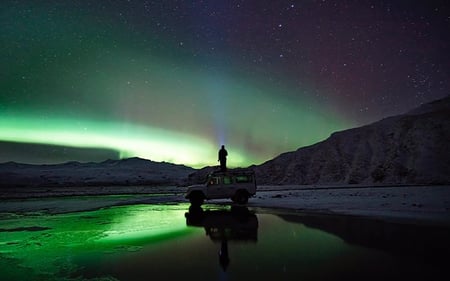
Befriend with the sky on a typical Nordic winter night
Planning your winter vacation is recommended as the Polar Light displays are understood to be somewhat unpredictable. The Northern Lights need a clear, dark, and wide-open sky to make a vivid appearance.
Leave the bright city lights behind and head out into the vast snow-covered landscapes where your canvassed sky is exposed. Be patient, prepared and wrap up warm, Lady Aurora will show when she's ready.
On the unfortunate nights when the clouds and the moon befriend the sky, the show may be slightly less visible but just as equally remarkable. That is why at Booknordics.com, we offer authentic and unique Nordic Adventures to give you the best possible chances to see the Green Lady.
Did you know that it's been recorded that Aurora Borealis can be seen from as far as our very own solar system? That may be a view to remember but we assure you that the Nordics are just as breathtaking.
The Best Month to See the Northern Lights
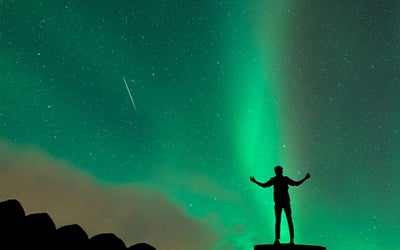
Join us on a Nordic Adventure!
Statistically speaking, the Northern Lights are most active in March and April, and September and October. Especially during the Equinoxes in the last two weeks of September and the second and third week of March. However, notably, the Northern Lights are also visible in November, December, January and February.
Did you know that through the summer months, as unnoticed as she may be, Lady Aurora is still scientifically present?
During the darker months of November, December, January, and the arrival of the Polar Night, you will frequently witness a magical blue twilight and usually during this time you have an outstanding opportunity to join a perfectly-timed Nordic Adventure. Gifted with extra night-time hours and more opportunities to chase the Northern Lights, you may be joined by a few twinkling stars to enlighten your view.
Let us take a look at the Nordic countries to see when is best to visit.
-
Norway's northern regions including Kirkenes, Alta, Tromsø, Bodø, the Lofoten Islands and Helgeland offer spectacular viewings of the Aurora Borealis. Specifically in November, December, and January as it can be considerably clearer and definitely magical. The finest months to capture the Northern Lights with more unclouded skies are late September through October and February through March.
-
The Finnish skies illuminate from October through March. In the areas of Finland above the Arctic Circle, the peak of the Northern Lights is in September and March accompanied by the crystalline sky. During the darker months of November, December, and January, viewings may be restricted due to cloud-spotted skies and snowfall sprinkle.
-
Sweden's northern regions are host to the Northern Lights from late September through March. Its crystal-clear skies and near-to-nothing light pollution offer excellent views of the mystical ballet and in turn, superb Arctic adventures. Abisko National Park is one of the best places in the world to witness this natural phenomenon.
-
Icelandic lands are brightened from late August to mid-April. Statistically, the equinoxes at the end of September and March are the best times for sightings in terms of solar activity and more visible skies. Whilst November, December, and January offer you longer and darker hours to ignite your night with splashes of colour.
-
Greenland's regions, at an excellent location within the Arctic Circle, are cast with the glow of the Northern Lights from September through March and April. Here, expect excellent viewings throughout all their winter months.
Holidays to Witness the Northern Lights
At Booknordics.com, we offer superior and hand-selected tours to accommodate any travellers' Nordic holiday experience. Take your pick of outstanding Northern Light tours from Norway, Iceland, Sweden, Finland, the Faroe Islands and Greenland. Yes! That is a lot of choices.
Whether you’re in search of a romantic and relaxing wilderness dream, an action-packed and frosty vehicle adventure, a slow and relaxing sail on the silent seas, or a peaceful soak in the vast nature of the Nordics - we have an endless list to suit everyone. Sign up for our email newsletter to discover more.
Happy Nordic Northern Light travels!
/BookNordics_Logo_CMYK_A_Po.jpg?width=450&height=155&name=BookNordics_Logo_CMYK_A_Po.jpg)
